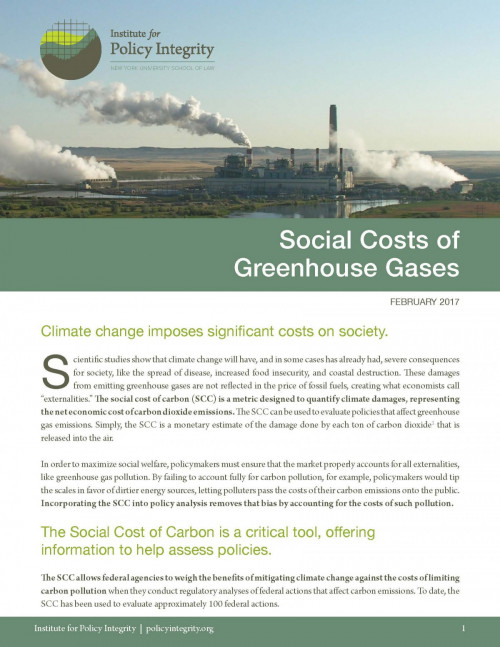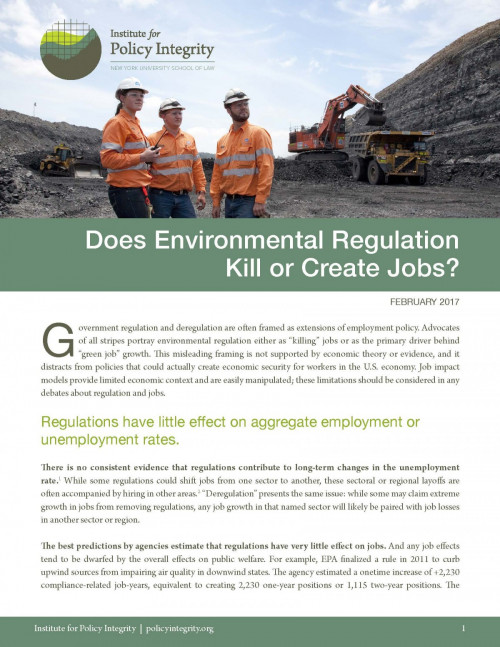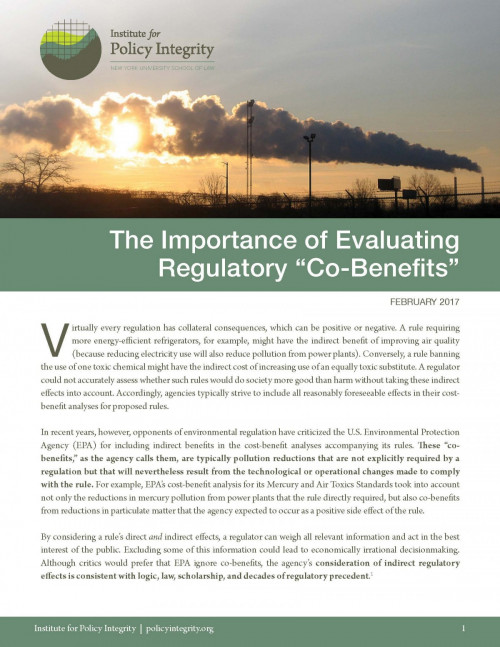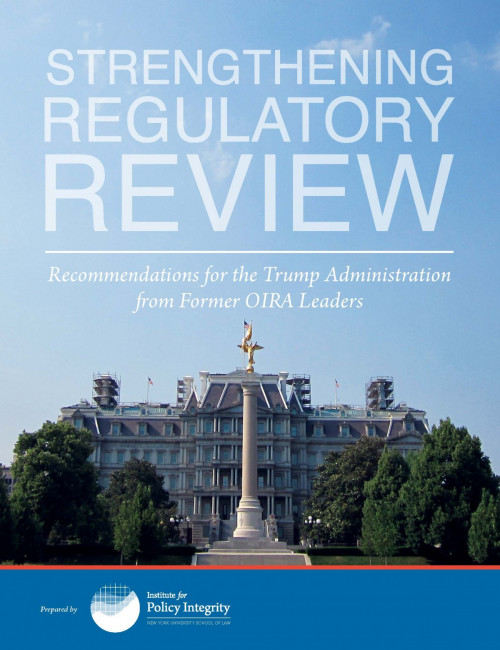The Institute for Policy Integrity produces a variety of publications. Our research reports develop in-depth research on our core issues, while our policy briefs and issue briefs provide focused analysis on more timely or particular topics. Our academic articles and working papers offer original scholarly research and analysis from established experts as well as fresh new voices.
Latest Publications
-

Social Costs of Greenhouse Gases
Scientific studies show that climate change will have, and in some cases has already had, severe consequences for society, like the spread of disease, increased food insecurity, and coastal destruction. The social cost of carbon (SCC) is a metric designed to quantify climate damages, representing the net economic cost of carbon dioxide emissions. Our issue brief on the Social Cost of Carbon details how this metric was developed and how it applies to federal regulatory policy.
-

Does Environmental Regulation Kill or Create Jobs?
Our issue brief on Jobs and Environmental Regulation addresses rhetoric on “job-killing regulations,” describing the lack of consistent evidence that regulations lead to long-term changes in the unemployment rate. It also provides information on how to analyze claims about job impacts.
-

The Importance of Evaluating Regulatory “Co-Benefits”
Our issue brief on Regulatory Co-Benefits analyzes the importance of using unbiased economic analysis to consider all direct and indirect costs and benefits of any environmental safeguard.
-

Strengthening Regulatory Review
Recommendations for the Trump Administration from Former OIRA Leaders
This report contains a set of recommendations for the Trump Administration that, if implemented, would strengthen the process of regulatory review. These recommendations reflect the general consensus of a group of former Administrators and Acting Administrators from the Office of Information and Regulatory Affairs who served under both political parties.
-

Measuring Flood Risk
What Are NYC Residents Willing to Pay for a Flood Protection System?
This policy brief evaluates how willingness to pay (WTP) for a flood protection system varies with exposure to flood risk, using detailed flood maps and parcel-level data to identify households within and just beyond the 100-year flood plain in New York City. Past research has estimated that a homeowner’s WTP for flood insurance is largely contingent upon their risk level. However, no studies to date have analyzed the WTP for other forms of flood protection. We conducted a survey of single-family homeowners living in the 100- and 500-year flood plains in New York City, and found that WTP for flood control systems varies with the degree of risk that homeowners face. While the majority of residents living in the 100- year flood plain were willing to pay up to $10 a month to contribute to the cost of a seawall, the majority of residents living in the 500-year flood plain, an area that has a 0.2% risk of flooding in any given year, were only willing to pay up to $7 a month. These results are consistent with other studies demonstrating that risk—actual or perceived—plays a large role in individuals’ WTP for protection from floods.
